By June Shrestha, MLML Ichthyology Lab
2020 was a big year. We saw a global pandemic, protests in support of the Black Lives Matter movement, and wildfires raging across the state. Despite all of this, we had nine students pull through to defend their thesis research in 2020! Please join me in congratulating the following students:
- Lindsay Cooper, Phycology Lab
- Kenji Soto, Geological Oceanography Lab
- Amber Reichert, Pacific Shark Research Center
- Mason Cole, Vertebrate Ecology Lab
- June Shrestha, Ichthyology Lab
- Dan Gossard, Phycology Lab
- Jacoby Baker, Ichthyology Lab
- Emily Pierce, Invertebrate Zoology Lab
- Miya Pavlock-McAuliffe, Physical Oceanography Lab
Please read below to learn a little more about each student's research. As always, please also check out the posts highlighting student research from previous years as well at the following links: 2019, 2018, and 2017.
Special author note: As I am one of the students that defended and graduated this year, this will be my last post for The Drop-In. From writing about classes to conferences and student research, it's been a pleasure writing for this blog. Hopefully someone else will carry the torch forward in the new year to highlight and celebrate the research of graduating students!
Lindsay Cooper, Phycology
"Compartmentalization & seasonal variability in storage compounds of Pterygophora californica"
- Lindsay's thesis research focuses on the effects of biomass loss on the seasonal variability in storage compounds of Pterygophora californica, an important local kelp species
- She investigated the existence of nutrient compartmentalization within the thallus of Pterygophora, whether there were any seasonal effects, and how biomass loss impacted the compartmentalization of nutrients.
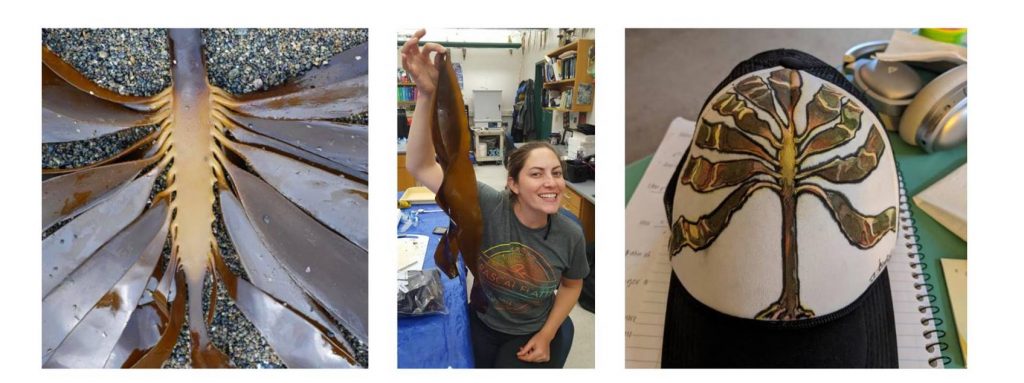
Kenji Soto, Geological Oceanography
"Habitat preferences of Lau Basin vent periphery invertebrates"
- Hydrothermal vent ecosystems in the Lau Basin (southwest Pacific) are characterized by a few chemical and geological patterns that follow along a north to south axis. Notably, the vents and surrounding rocks in the north are made of a smooth volcanic rock called basalt whereas the vents and rocks in the south are made of a rough volcanic rock called andesite.
- Previous to Kenji's research, ROV (remotely operated vehicles) surveys observed that northern communities were dominated by anemones and southern communities were dominated by sponges. Kenji's research set out answer why these community differences might exist and if these differences might be due to the different types of rocks in each region.
- To answer this question, Kenji set out grapefruit sized andesite and basalt rocks in the northern and southern regions for 42 months and observed what types of animals colonized the rocks.
- Kenji found that neither rock type nor roughness had an influence on the animal community and that most likely, the community differences were due to differing levels of hydrogen sulfide, a chemical that allows for bacteria to create energy via a process called chemosynthesis. Kenji mostly found small crustaceans called copepods, bristle worms, and limpets.
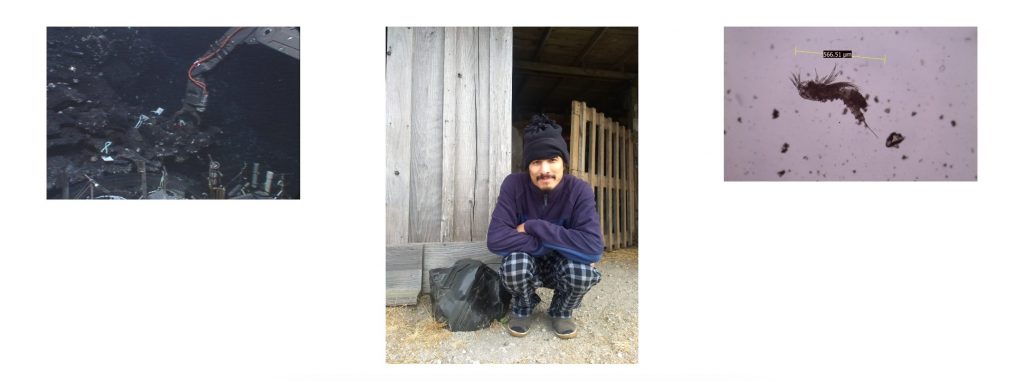
Amber Reichert, Pacific Shark Research Center
"Habitat Associations of Catshark Egg Cases (Chrondrichthyes: Pentanchidae) off the U.S. Pacific Coast"
-
Amber found that complex geographic and environmental features such as rugosity and depth were shown to influence oviposition sites of Apristurus brunneus and Paramturus xaniurus.
-
Areas of greatest predicted habitat suitability for egg case deposition were indicated on the shelf break and upper to mid slope of the Monterey Canyon and in adjacent canyons for both species.
-
Structure forming marine invertebrates (SFMI) such as corals and sponges were identified as important faunal attachment structures. Sponges were the SFMI most associated with egg cases for booth species.

Mason Cole, Vertebrate Ecology
"Detecting Feeding and Estimating the Energetic Costs of Diving in California Sea Lions (Zalophus californianus) Using 3-Axis Accelerometers"
- Mason found that accelerometers attached to the top of a California sea lion's head can accurately detect moments of prey capture.
- High accuracy was achieved with an algorithm that searched for a particular phrase in accelerometer signals.
- Results hint at the future use of this method to infer relative prey size.
- Using acceleration and depth data, Mason estimated the energy expended by wild sea lions at fine time scales during descent and ascent phases of their dives.
- This produced the first estimates in this species of changes to lung air volume, buoyancy, and tissue density across depth.
- He confirmed that sea lions adjust swimming effort primarily in response to the buoyancy force they experience.
- Deeper dives require more energy per unit time, but less energy per unit distance, a phenomenon that results from faster swimming. This strategy allows sea lions to use time and oxygen hunting at depth, but results in an overall higher rate of energy expenditure while underwater.

June Shrestha, Ichthyology
"Fish pee in the sea: a surprising source of limiting nutrients in California kelp forests"
- For her master's thesis, June sought to answer the time-old question: do fish pee in kelp forests??
- Through her research, June learned that YES! Kelp forest fishes pee nitrogen and essentially fertilize their own habitat
- Importantly, pee from an entire fish community can rival upwelling as a nutrient source during low nutrient periods (e.g. summer or ENSO events)
- Lastly, her research provides evidence supporting the establishment of marine protected areas, which not only protect fish biomass and abundance, but help maintain nutrient cycles as well.
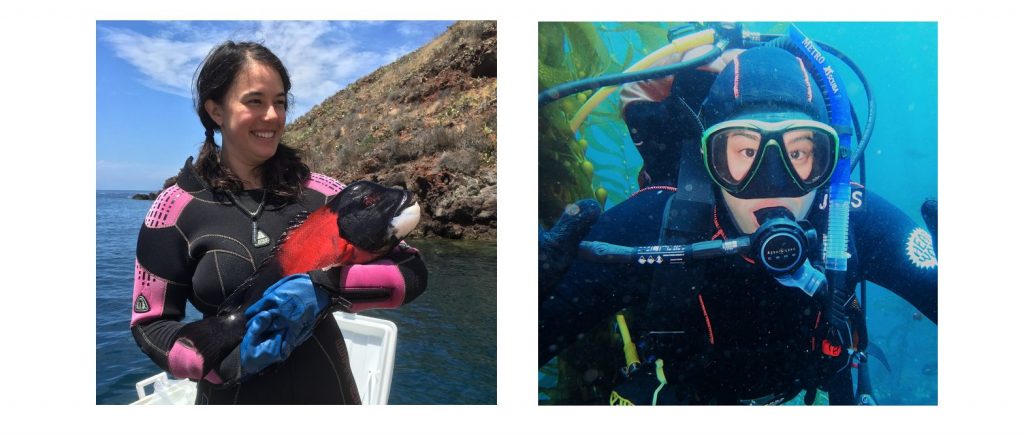
Dan Gossard, Phycology
"Epiphyte-host dynamics between Pyropia and Nereocystis in central California"
- An epiphyte can be considered to be a plant that grows on another plant (a host). In the macroalgal world in coastal marine ecosystems, epiphytes can be considered to be seaweeds growing on other seaweed hosts. Epiphytes are commonplace, but numerous nuanced complexities between epiphyte-host relationships can vary among species and can be influenced by external environmental factors.
- Immediately after Dan learned that there was a poorly understood annual epiphyte that grew on an annual host species in exclusively exposed and dangerous waters, he knew his thesis was going to test hypotheses on this relationship. He ultimately studied dynamics between the bull kelp Nereocystis luetkeana and its epiphyte Pyropia nereocystis.
- After 15 months of sampling for epiphytism presence in natural populations at five sites, collecting epiphytes and hosts from these five sites, and after experimenting with the epiphyte using two manipulative deployments 3-4 weeks a-piece, Dan's results added some breadth to the previously understood paradigm regarding this epiphyte-host relationship.
- Dan found that the epiphyte Pyropia persisted interannually among all sites despite interannual variability in host Nereocystis persistence. Furthermore, small scale spatial differences (environmental and/or biotic) influenced epiphyte-host dynamics, playing a role in determining persistence and development. Lastly, the epiphyte-host relationship was mediated by host characteristics, where abundance was facilitated by larger hosts (and likely also influencing reproductive output as a result).
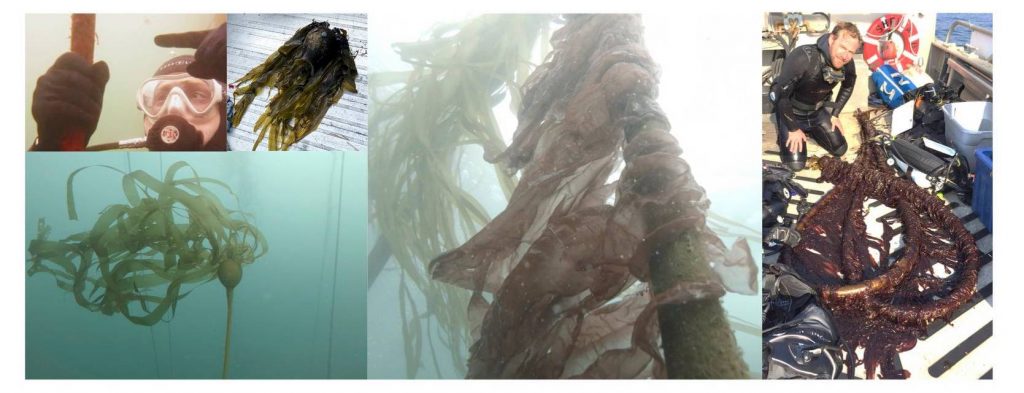
Jacoby Bakery, Ichthyology
"Maternal environment drives larval rockfish gene expression (Sebastes spp.)"
- Ocean acidification and hypoxia are two stressors expected to increase in severity due to climate change. Combined with upwelling events, nearshore species will be subjected to periodic levels of low ph and low oxygen. Knowing how local species will respond to these stressors is important in understanding how they will fare in the face of climate change.
- Early life history stages of marine organisms may be more at risk to these climate change stressors as many marine organisms have a larval phase that typically doesn't have fully developed ion regulatory and oxygen transport mechanisms. Rockfish, however, are internal fertilizers and may possess the ability to buffer their larvae from environmental stressors during gestation.
- Jacoby used RNA sequencing to study how larval gopher and blue rockfish change their gene expression in response to low pH and/or low oxygen levels at the time of parturition (birth) and after a 5-day larval exposure to the direct environment. He found that the maternal environment heavily influenced larval gene expression patterns for at least the first five days after birth.
- Furthermore, he found that larvae differentially expressed fewer genes between birth and five-days after birth in larvae that gestated in a stressor treatment, potentially alluding to a delay in development.
- This study demonstrates the important role of the maternal environment during gestation and that rockfish likely are not able to buffer their larvae from environmental stressors.

Emily Pierce, Invertebrate Zoology
"Emanation and Decay of Environmental DNA from Three Molluscan Species"
- Emily studied the rate of eDNA accumulation and degradation from three intertidal molluscs from Monterey Bay. eDNA can be used to detect rare organisms in an ecosystem and may be a way to track endangered species.
- She found that for abalone (Haliotis rufescens) larger individuals release more eDNA than smaller individuals, and active individuals released more than relaxed abalone, but these trends did not hold up for California mussels (Mytilus californianus) or rough limpets (Lottia scabra), who exude very little eDNA. eDNA degraded quickly over 24 hours, but was detectable for over 3 weeks after the addition of DNA under experimental conditions.
- These measurements suggest that eDNA could be used to detect endangered abalone in California. They also show the difference in accumulation of eDNA from organisms in the same phylum, highlighting the need for species specific studies before attempts at quantification based on molecular detection can be made.
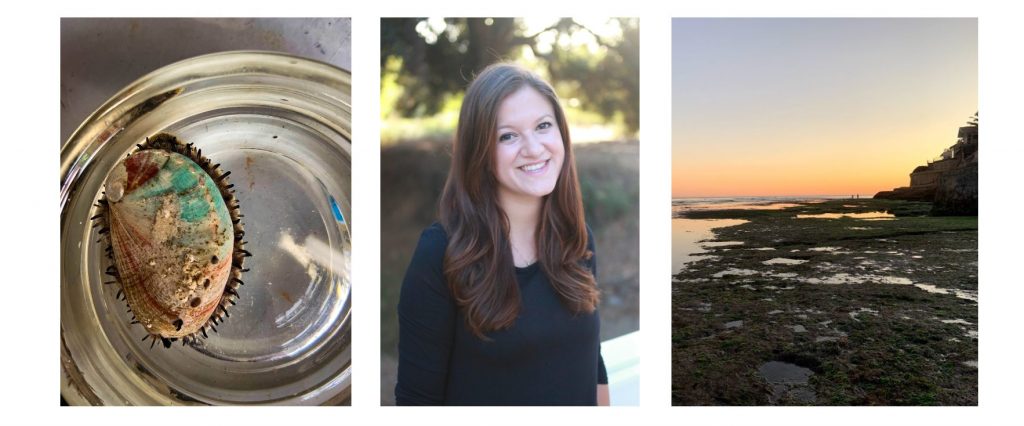
Miya Pavlock-McAuliffe, Physical Oceanography
"Drivers of sub-seasonal to interannual shoreline change at Sunset State Beach in Monterey Bay, California"
- Miya's study investigates the interrelationships between the shoreline, sandbar, and wave characteristics using twenty months of half-hourly video observations and five years of biannual survey observations.
- The relationship between sandbar and shoreline position was investigated to evaluate whether the sandbar buffers the shoreline from incoming wave energy. Next, shoreline change models were used to test the influence of cross- and alongshore sediment transport on storm-scale to interannual shoreline evolution.
- The results of this study emphasize the need for accurate projections of changing wave direction in addition to wave energy to accurately predict coastal change.


